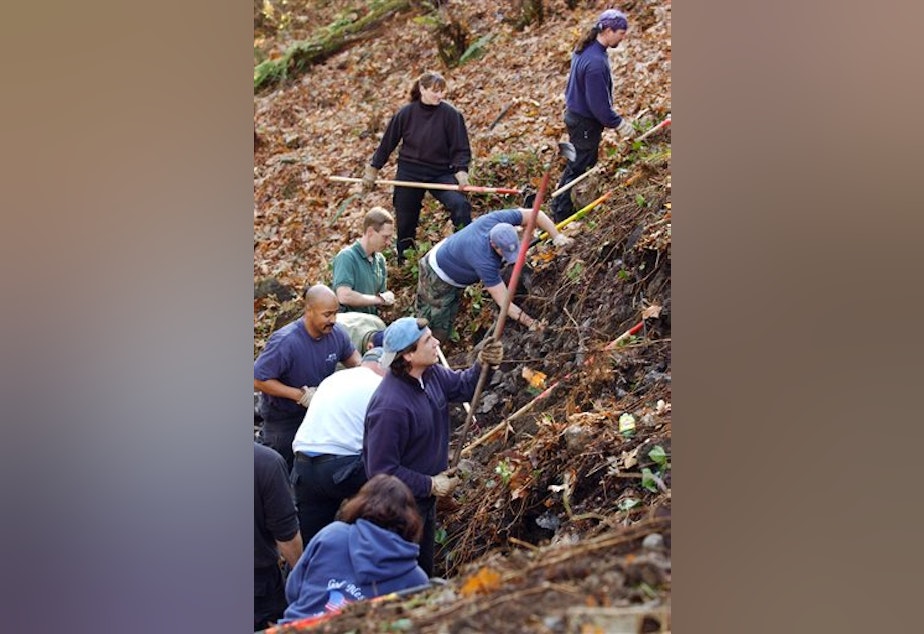Youngest Green River Killer victim identified 37 years later using DNA technology

Decades after the murder, science has caught up to identify a girl who is believed to be Gary Ridgway's youngest victim.
The King County Sheriff's Office announced Monday that Wendy Stephens has been identified as one of Ridgway's victims. At 14, she is believed to be the youngest identified.
Ridgway, more notoriously known as the Green River Killer, was arrested in 2001, and pleaded guilty in 2003 to the killings of 49 women, often sex workers or women in vulnerable situations, such as runaways.
Stephens was one such runaway. She went missing from her home in Denver, Colorado, in 1983. Her remains were found in SeaTac the following year. Despite connecting the remains to Ridgway, her name was unknown to detectives.
As part of a plea agreement that allowed him to escape the death penalty, Ridgway admitted to many of his murders, and provided other details about his crimes. He also pointed to places he left bodies.
But the case of the body found in SeaTac remained in limbo until scientists were recently able to compare DNA samples that tied it to a missing girl from Colorado.
Sponsored
The discovery is the product of work between the sheriff's office, forensic anthropologist Dr. Katherine Taylor, the DNA Doe Project, and other contributing scientists.
According to a statement from the King County Sheriff's Office: Today’s development is a testament to the tireless efforts of detectives, scientists and other professionals who employed the latest in emerging DNA and genealogical technologies in Wendy’s disappearance. Cases once thought unsolvable are now within reach thanks to this pioneering work.
Every person, in the words of Dr. Taylor, needs their name. Wendy again has hers thanks to the collaborative efforts of this investigative team. It is our hope today’s development brings those who love Wendy one step closer to healing.
The Wikipedia page for the Green River Killer was updated with Stephen's name within hours of the sheriff's office announcement. Two more victims remain unidentified.
King County Prosecutor Dan Satterberg also issued a statement Monday:
Sponsored
Ridgway’s murderous spree left a trail of profound grief for so many families of murdered and missing women. His crimes left an impact on our community that continues today. Ridgway was convicted of the murder of Wendy Stephens in the original court plea. She was referred to only as “Jane Doe” in Count number 24. He has been found guilty of 49 counts of murder, and will spend the rest of his life in prison. Thanks to the hard work of the diligence and hard work of the King County Sheriff’s Office and Dr. Katherine Taylor, we can now say her name. We are thankful that Wendy Stephens’ family will now have answers to their enormous loss suffered nearly 40 years ago.
Ridgway is serving multiple life sentences at the Washington State Penitentiary in Walla Walla.
DNA tech used for cold cases
The use of DNA technology has recently pushed forward previously cold cases, solving a series of murders in Washington, many going back decades.
William Talbott, 56, was arrested and charged for the 1987 killings of 20-year-old Jay Cook and 18-year-old Tanya Van Cuylenborg. The young couple were driving through Seattle, down from Vancouver Island, at the time to run an errand for family. DNA from the suspected killer was found near the bodies. Using an online genealogy website, detectives were able to track down family members of the suspect using that DNA. It led them to Talbott.
Sponsored
Elizabeth Ann Roberts was identified in 2020, 23 years after her body was found in Everett. Roberts was 17 at the time, in 1977. DNA was able to match Roberts the remains that went unidentified for decades.
DNA technology and genealogy sites are also how Joseph James DeAngelo, aka the Golden State Killer, was finally tracked down and arrested in 2018.




